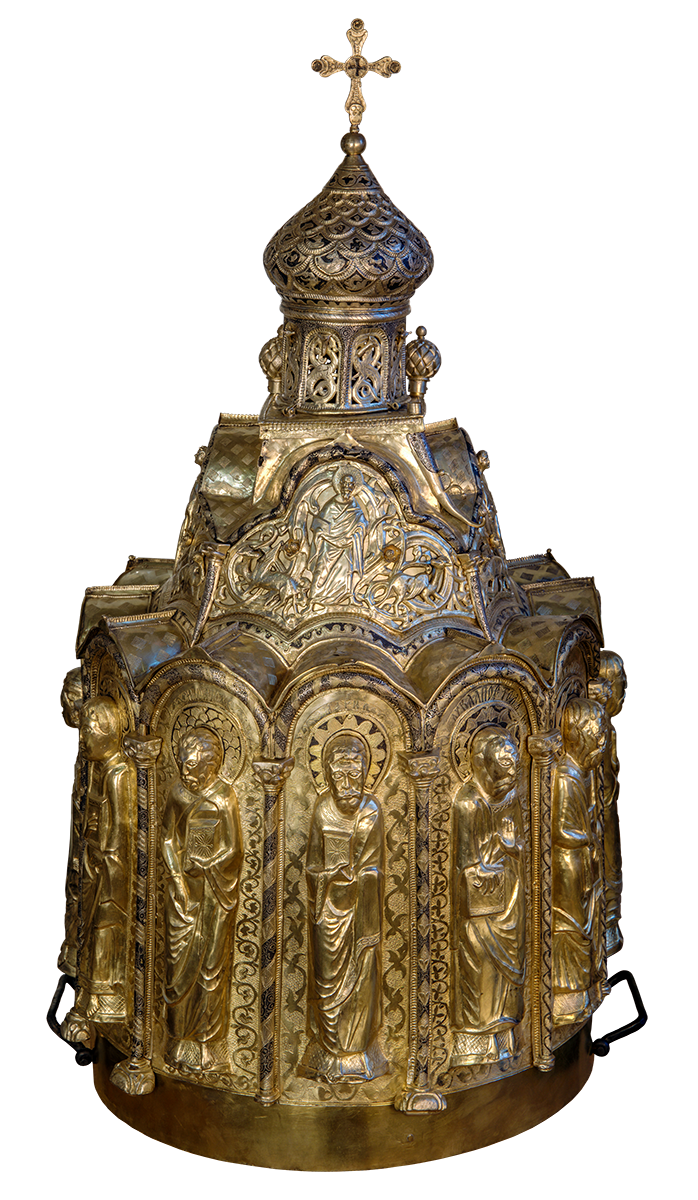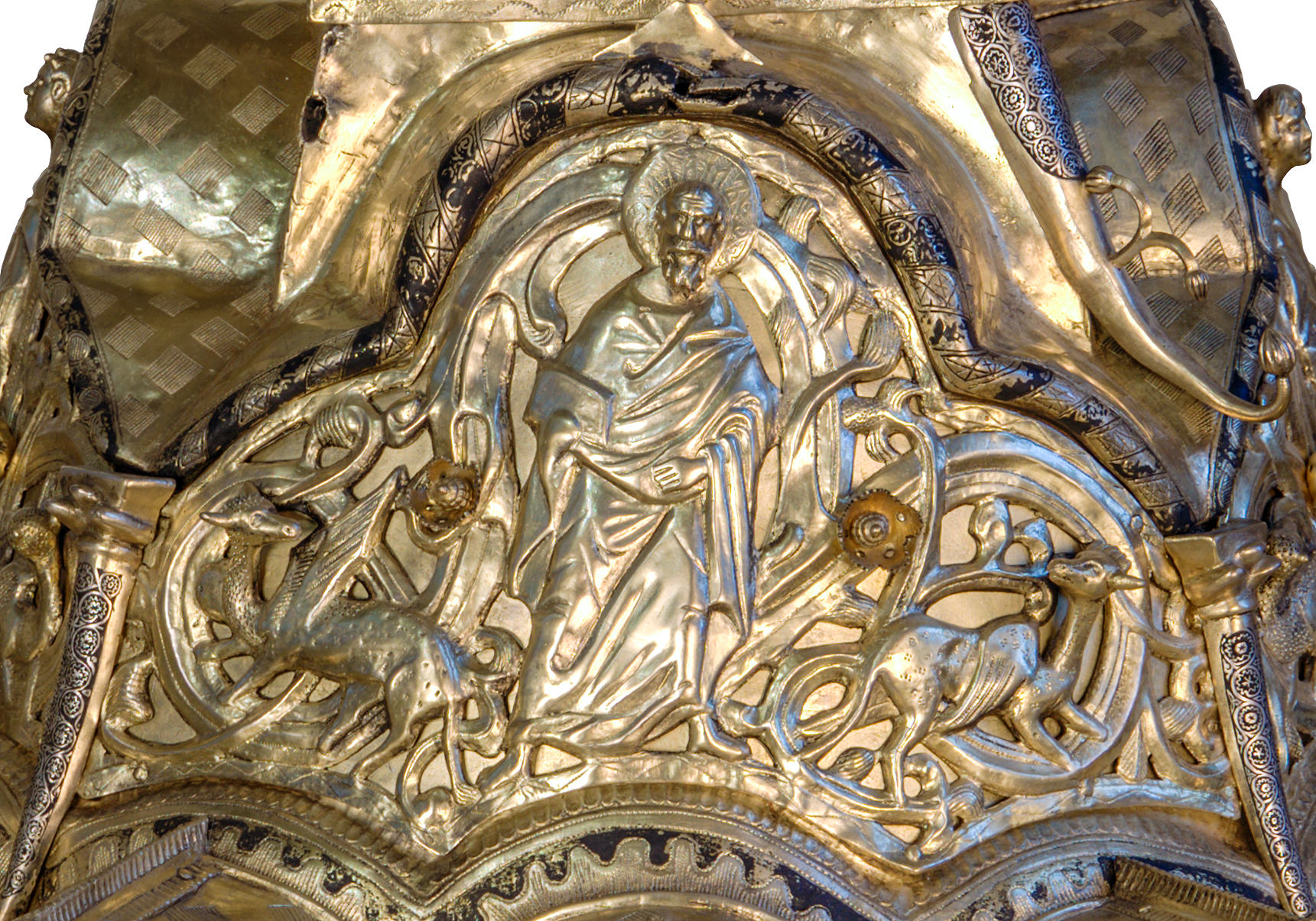The Large Pyx from Assumptions Cathedral in Moscow, 1486Electrotype copy


The Large Pyx or “Jerusalem” is a temple-shaped sacrament construction. During church festivities it was brought out of a church altar by a deacon. Firstly it is mentioned in Ipatiy codex (15th century) under the date of 1158, and latest information about its construction dates back to the end of 15th century.
This particular Pyx – is a copy of the Large Pyx of Assumption’s Cathedral in Moscow, which, as a legend says, was saved from theft in Patriarch’s Sacristy. By an order of Ivan III, it was built up in 1486 for glorious festivities in Assumption’s Cathedral in Moscow. Inscription on it says: “IN A YEAR OF 6994 (1486) PRODUCED WAS SUCH A JERUSALEM BY A WILL OF BLESSED AND CHRISTLOVING GREAT PRINCE IVAN VASILIEVICH MASTER OF ALL RUS’ IN THE 25TH YEAR OF HIS RULE INTO THE ASSUMPTIONS CHURCH OF MOST HOLY AND TO THE GRAVE OF THE WONDERWORKER PETER IN MOSCOW”.
A term “master of all Rus” meant that Ivan III was a powerful sovereign in his independent state, as well as his and Moscow princes’ origin from Byzantine emperors.
During the rule of Ivan III the Horde era in Rus was brought by his victory to an end in 1480, and during the rule of his son Basilius III concluded a long-term re-unification of Russian lands to a centralized state with its head in Moscow period. Since than documents give us a new naming of Russian state – Russia, and Moscow becomes its capital. By the beginning of Ivan III rule the territory of Moscow Princedom was not more, than 400.000 km², but as his grandson – Ivan IV – started his rule, the state territory was 6 times larger.
The copy of Pyx takes a special place in a history of the Historical Museum. It was made together with other world famous artifacts’ copies for the Historical Museums. It can show us a growing interest towards Russian history and culture at the end of 19th century.
The Pyx is produced in a most complicated technique of electrotype – a “high relief calking”. A relief itself would be pressed out of a metal plate and worked out. Such a technique in 15th century was used almost by Italian artisans. That is why this Pyx is considered to be a stylistic symbiosis of Russian 15th century and Romanesque 13th century medieval arts.

